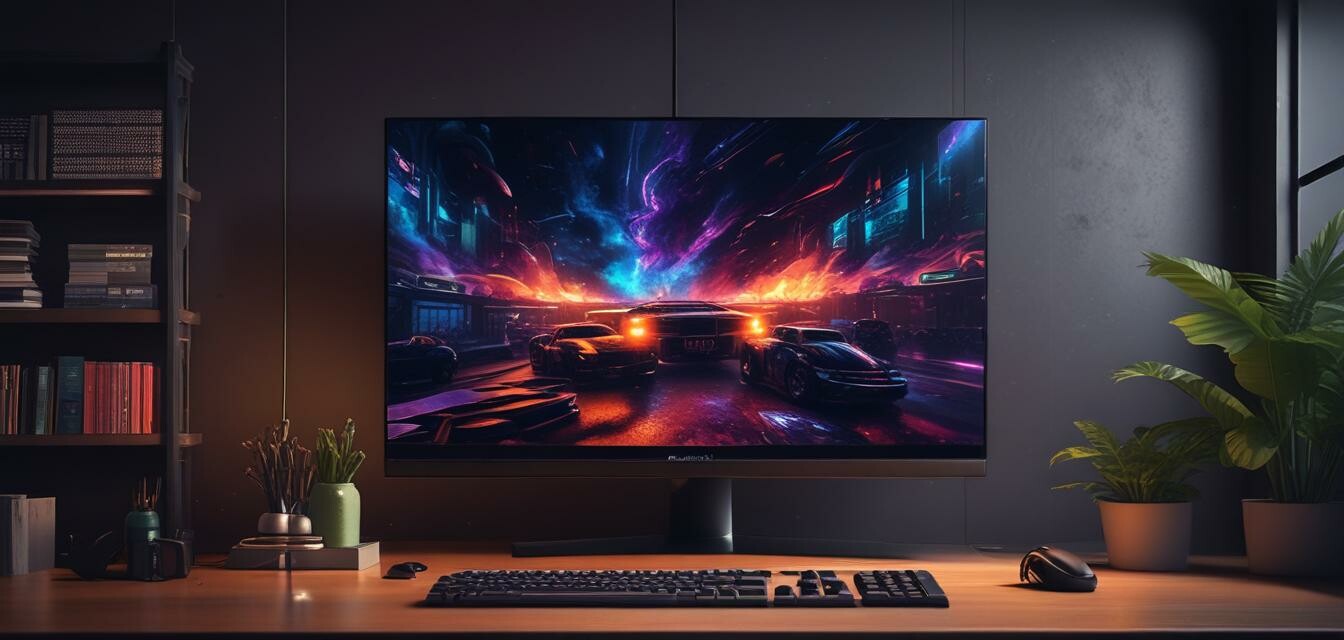
Understanding OLED Monitor Specifications for Gamers
Gamer, it's essential to understand the specifications of OLED monitors to ensure you pick the right one for your gaming setup. In this article, we'll cover the key specifications you should know, including refresh rates, response times, resolutions, and more, allowing you to make an informed purchase. Let's get started!
Key Takeaways
- OLED technology provides superior color accuracy and contrast.
- Refresh rates affect the smoothness of your gameplay experience.
- Response time is crucial for fast-moving games and minimizing motion blur.
- Resolution impacts visual clarity; higher resolutions are generally better.
- Always consider your gaming needs against your budget.
What is OLED Technology?
Organic Light Emitting Diode (OLED) technology offers fantastic color reproduction and deeper blacks compared to traditional LCD monitors. Each pixel emits its own light, allowing for unparalleled contrast ratios and vibrant colors.
Essential Specifications for Gamers
1. Refresh Rates
The refresh rate of a monitor, measured in Hertz (Hz), indicates how many times the display can refresh the image per second. For gamers, higher refresh rates can lead to smoother gameplay.
| Refresh Rate (Hz) | Typical Use |
|---|---|
| 60 Hz | Casual gaming, watching videos |
| 120 Hz | Competitive gaming, fast-paced action |
| 240 Hz | Professional gaming, esports |
2. Response Times
Response time refers to how quickly a pixel can change from one color to another, usually measured in milliseconds (ms). Lower response times are essential for ensuring that fast-moving actions do not cause blurring or ghosting.
| Response Time (ms) | Suitable For |
|---|---|
| 0.1 ms - 1 ms | Fast-paced gaming, competitive shooters |
| 1 ms - 3 ms | General gaming, action games |
| 3 ms - 5 ms | Casual gaming, slower-paced titles |
3. Resolution
Resolution indicates the amount of detail that a monitor can display. Higher resolutions provide clearer images and are essential for immersive gaming experiences.
| Resolution | Pixel Count | Typical Use |
|---|---|---|
| 1080p (Full HD) | 1920 x 1080 | Casual gaming, budget-friendly options |
| 1440p (QHD) | 2560 x 1440 | Mid-range gaming, gamers seeking more detail |
| 4K (Ultra HD) | 3840 x 2160 | High-end gaming, professional streaming and graphic design |
4. Screen Size
Screen size is another important factor, impacting your overall gaming experience. Larger screens can enhance immersion in gaming, but it's vital to choose a size that's comfortable for your space.
- 24-27 inches: Great for most desktop setups.
- 32 inches: Ideal for console gaming and larger desktops.
- 34 inches and above: Perfect for ultrawide gaming and immersive experiences.
5. Panel Type
Understanding the panel type is also important as it influences color accuracy and viewing angles.
- IPS: Excellent color reproduction and wide viewing angles.
- VA: Great contrast ratios, suitable for dark room gaming.
- TN: Fast response times, but limited color accuracy.
Tips for Beginners
- Start with the essential specs like refresh rates and response times.
- Don’t overspend; find a monitor that fits your budget without compromising key features.
- Consider how much desk space you have for the monitor size you want.
- Read reviews on different models to see how they perform in real-world settings.
- Visit our Buying Guides section for more insights.
Pros
- Excellent color accuracy and vibrancy.
- Deep blacks enhance perceived contrast.
- Fast response times suitable for most gaming scenarios.
- Wide viewing angles help with multi-player setups.
Cons
- Potential for screen burn-in with static images.
- Higher price range compared to traditional monitors.
- Limited brightness levels in some models.
Conclusion
Choosing the right OLED gaming monitor requires a comprehensive understanding of various specifications. By considering factors like refresh rates, response times, resolution, screen size, and panel types, you can find the ideal monitor tailored to your gaming preferences. Don't forget to explore our 4K OLED Gaming Monitors and Budget-Friendly OLED Gaming Monitors categories for some great options. Happy gaming!